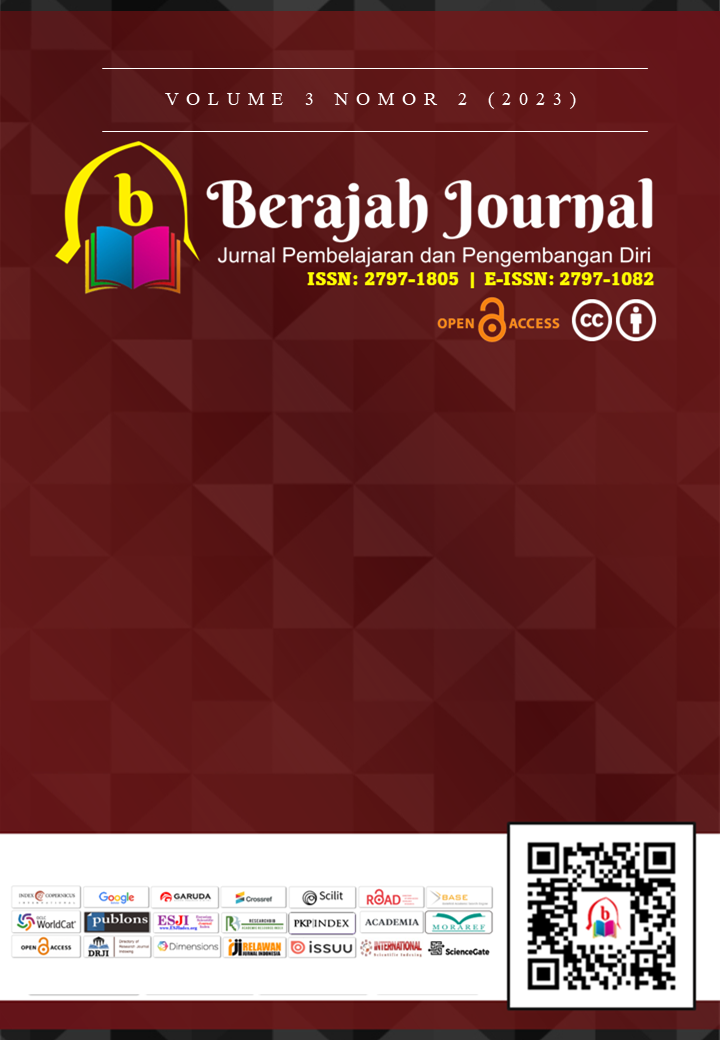EFFECT OF THE LEARNING OUTCOMES OF THE TERRESTIAL NAVIGATION COURSE IN COMPETENCE PASSAGE PLANNING FOR CADETS WHO ARE CARRYING OUT SEA PROJECT ON BOARD
DOI:
https://doi.org/10.47353/bj.v3i2.232Keywords:
Terrestial Navigation, Passage Planning, Catalog & Nautical Chart, Position Plotting, Distance and Course Voyage Determination, Voyage Planning TabulationAbstract
Terrestial Navigation is a harmonious union between science and art that teaches us how to sail a ship from one place to another safely, quickly, efficiently, and economically and safely to the destination. Passage Planning is the planning of ship voyages from one place to another safely, quickly and economically, and safely to the destination. Shipping from one port to another must be coordinated by all crew members. Politeknik Pelayaran Malahayati, which is a Technical Implementation Unit under the Ministry of Transportation, the Transportation HR Development Agency, which has the task of implementing Vocational Education, research, and Community Service in the field of Shipping, has organized a Diploma III Nautical Studies, Ship Engineering Studies, and Ship Electrical System Studies. This study aims to evaluate the influence of understanding Passage Planning Terrestial Navigation on the competence of cadets when doing Sea Project on board. The research method used is quantitative research with a sampling technique using purposive sampling on cadets at Voyage schools. Data was collected through questionnaires and regression analysis was used to test the hypothesis. The results of the study show that the understanding of Passage Planning in Terrestial Navigation has a significant effect on the competence of cadets when carrying out maritime practices on board. Therefore, it is suggested for Voyage schools improve the learning of Terrestial Navigation Passage Planning to increase the competence of cadets in carrying out maritime practices on board. The results of the study simultaneously obtained the value of Fcount > Ftable [29.008 > 2.513] at the significance level∝ = 5%, this states that simultaneously the variables Catalog & Nautical Chart (x1), Plotting Position (x2), Distance and Course Voyage Determination (x3), Voyage Planning Tabulation (x4), affect competence cadets during Sea Project on board at Politeknik Pelayaran Malahayati.
Downloads
References
Deshwal, P., Trivedi, A., & Himanshi, H. L. N. (2017). Online learning experience scale validation and its impact on learners’ satisfaction. Procedia computer science, 112, 2455-2462. doi: https://doi.org/10.1016/j.procs.2017.08.178
Isaac, O., Aldholay, A., Abdullah, Z., & Ramayah, T. (2019). Online learning usage within Yemeni higher education: The role of compatibility and task-technology fit as mediating variables in the IS success model. Computers & Education, 136, 113–129. doi https://doi.org/10.1016/j.compedu.2019.02.012
Karwati, E. (2014). Effect of electronic learning (e-learning) on the quality of student learning. Journal of Communication Research, 17(1), 41–54.
Navimipour, N. J., & Zareie, B. (2015). A model for assessing the impact of e-learning systems on employees’ satisfaction. Computers in Human Behavior, 53, 475-485. doi: https://doi.org/10.1016/j.chb.2015.07.026
Nugroho, M. A., Setyorini, D., & Novitasari, B. T. (2019). The role of satisfaction on perceived value and e-learning usage continuity relationship. Procedia Computer Science, 161, 82–89. doi: https://doi.org/10.1016/j.procs.2019.11.102
Pereira, F. A. de M., Ramos, A. S. M., Gouvêa, M. A., & da Costa, M. F. (2015). Satisfaction and continuous use intention of e-learning service in Brazilian public organizations. Computers in Human Behavior, 46, 139–148. doi: https://doi.org/10.1016/j.chb.2015.01.016
Rienties, B., & Toetenel, L. (2016). The impact of learning design on student behavior, satisfaction, and performance: A cross-institutional comparison across 151 modules. Computers in Human Behavior, 60, 333–341. doi: https://doi.org/10.1016/j.chb.2016.02.074
Tîrziu, A. M., & Vrabie, C. (2015). Education 2.0: E-learning methods. Procedia-Social and Behavioral Sciences, 186, 376-380. doi: https://doi.org/10.1016/j.sbspro.2015.04.213
Wang, C., Hsu, H.-C. K., Bonem, E. M., Moss, J. D., Yu, S., Nelson, D. B., & Levesque-Bristol, C. (2019). Need satisfaction and need dissatisfaction: A comparative study of online and face-to-face learning contexts. Computers in Human Behavior, 95, 114–125. doi: https://doi.org/10.1016/j.chb.2019.01.034
Yilmaz, R. (2017). Exploring the role of e-learning readiness on student satisfaction and motivation in a flipped classroom. Computers in Human Behavior, 70, 251–260. doi: https://doi.org/10.1016/j.chb.2016.12.085
Downloads
Published
How to Cite
Issue
Section
License
Copyright (c) 2023 Rispa Saeful Mu'tamar, Dedy Kurniadi, Fazri Hermanto

This work is licensed under a Creative Commons Attribution 4.0 International License.




























